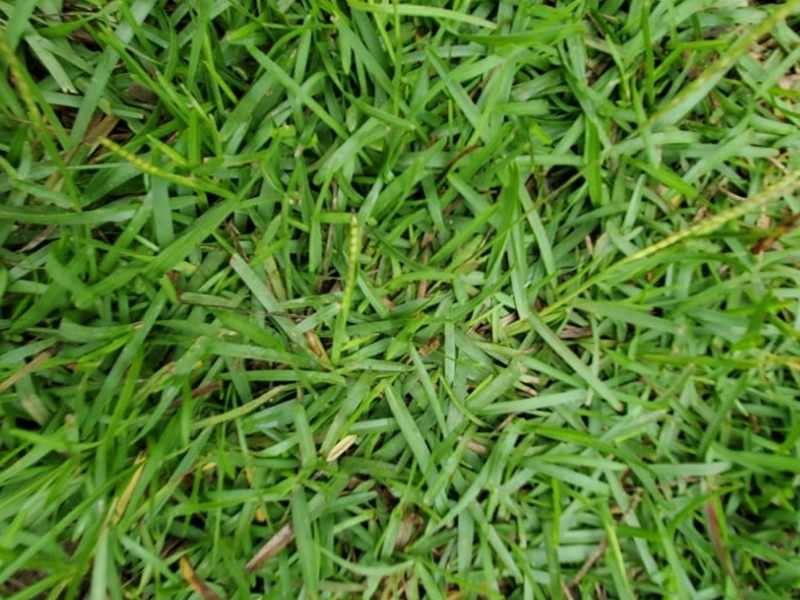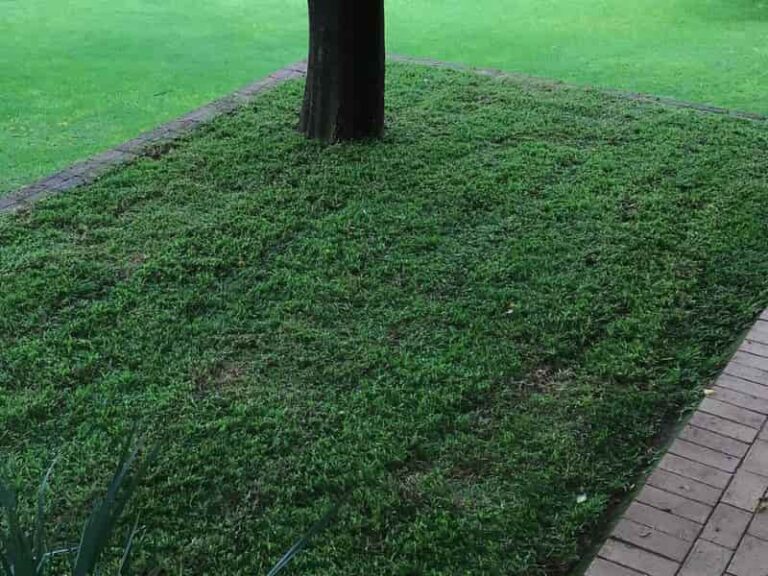How to Make Bahia Grass Thicker
Bahia grass (Paspalum notatum Flugge) is a popular choice for turfs, golf courses, and private loans in areas such as Florida. The grass species gives your space a gorse texture and light green color, ideal for the summer and spring months. Making bahiagrass thicker only improves your lawn and makes it more appealing, but how can I make it thicker?
These practical lawn care tips will make your Bahia grass thicker
- Mow properly and regularly every seven to 14 days.
- Overseed bare areas.
- Dethatch with appropriate tools.
- Watering and controlling moisture on shaded Bahia lawn areas.
- Improving soil pH
- Applying a limited amount of nitrogen fertilizer
- Control weeds and pests
A thick bahiagrass lawn looks attractive and it can be an effective defense against weeds and other undesirable vegetation. Having a lush grass surface also helps to conserve water, is drought tolerant, and acts as a shock absorber for feet and other traffic on the grass surface.

How does bahia grass spread?
Bahia grass spreads through stolons ( a creeping stem-like structure that spreads horizontally over a surface) to form new roots and leaves over a growing surface. The grass takes a considerable time (about four weeks) to germinate and spread over a surface. Favorable environmental conditions such as warm temperature, moisture, and nutrients can affect how fast your grass spreads over a lawn surface.
Bahia grass forms a thick carpet making it ideal for lawns, courses, and other surfaces whose spaces are vulnerable to constant foot traffic.
How to make bahia grass thicker
You can protect your lawn from weeds with thick grass and improve its drought resistance with thick grass. The thickened surface appears lush and is more aesthetically pleasing compared to regular-sized grass patches. Besides, thick grass offers extra padding to safeguard against stolon damage from constant traffic.

You can make bahia grass thicker by considering some essential factors for a healthy lawn. Over-seeding can also help you effectively cover uneven patches and give your turf an even and lush finish.
Here’s how to make your bahia grass thicker
1. Use a nitrogen fertilizer
Nitrogen is an essential compound in the maintenance of healthy foliage. Lack of adequate quantities of fertilizer causes reduced growth, thin grass, and the plants are more susceptible to diseases. You can make your bahia grass thicker by adding a nitrogen-rich fertilizer such as milorganite during periods of active growth. An ideal time to apply fertilizer is from spring to late fall as the grass continuously sprouts new foliage.
Always remember to check the manufacturers’ specifications on recommended quantities per square foot to maintain the effectiveness of the fertilizer and prevent damage to the soil. An analysis of a product’s NPK ratio provides essential information on the concentration of vital nutrients such as nitrogen, phosphorous, and potassium.
Milorganite (and other slow-release) fertilizers are especially suited for thickening grass partly because the slow-release feature makes for a durable option that rarely causes adverse effects on continuous application.
2. Mow grass properly and more often.
Mowing grass is an essential task that provides numerous benefits for your lawn. Regular trimming reduces overall grass height, creates a neat, even surface, and encourages lateral spreading rather than vertical growth.
Bahia grass can reach up to 12-25 inches if left to grow unchecked. You need to have a thorough mowing schedule and use the right equipment to thicken your grass with mowing. It’s best to mow your lawn when dry; wet grass may clump or bend and make it difficult to make a clean cut.
Always remember to adjust your mower to a recommended height before you begin cutting the grass on your lawn. The ideal mowing height for Bahia grass is about 3-4 inches from the turf surface. In addition, your mowing schedule should include a weekly to bi-monthly (7-14 days) routine if you are looking to ensure a thicker lawn surface.
Here are some extra tips that you can consider during mowing
- Mulch as you mow. You can use a grass-catching bag when cutting long grass, but if your grass blades are short and tender, leaving the short trimmings on your lawn can help retain essential nutrients and prevent excessive water loss from your lawn surface.
- A sharp blade is more effective. Don’t forget to sharpen your mower blades before each session for a clean cut.
- Invest in an auto-mower for regular mowing and a clean finish. Auto-mowers work through an automated schedule, which helps to make it easier to maintain a regular timetable without constantly planning for time to mow.
- A double cut can be effective when trimming long grass.
3. Improve Soil PH and Quality
Healthy soil is essential in promoting plant vitality, including making your grass thicker. Different grass species have unique requirements in soil type, PH, moisture, etc. Bahia grass prefers slightly acidic soils with a PH ranging from 5.5-6.5 for optimum growth and stolon development. Studies show that extreme PH changes can cause reduced nutrient intake, grass turning yellow, stunted growth, and foliage thinning for the plants.
Excessive/continuous application of nitrogen-rich fertilizer can alter the PH of the soil rendering it more acidic and less favorable for continued Bahia grass growth. It is vital to test your soil’s acidity levels (at least once every two to three years) for any changes in pH levels. Also, you can conduct a soil PH analysis if you notice thinning, yellowing, and other signs of unhealthy grass on your lawn.
It’s also crucial to ensure that your soil surface has adequate quantities of minerals and nutrients as you attempt to thicken your grass. Insufficient nutrient levels make it difficult to promote healthy lawn growth, especially during its active growing phase. Bahia grass is a versatile species that can tolerate clay and sandy soils. However, you need to ensure that your grass does not suffer from nutrient deficiencies as it grows.
4. Overseed bare areas
Over-seeding can help make your Bahia grass appear thicker and greener. You can consider planting a chilly weather turf grass variety to help fill bare spaces or correct discolorations on your lawn. It’s best to start over-seeding your grass during spring when the grass is actively growing. Reseeding the same type of grass in the fall and winter might not be suitable primarily because that is when the grass is in its dormant stage.
Reseeding bare areas gives your lawn an alluring touch and makes your bahia grass appear thicker. It’s advisable to lower your mowing height, dethatch the bare patches before spreading your seeds. You can also use the screwdriver test to check if your lawn needs a core aeration activity before seeding.
If you live in a colder area, you can opt to reseed with the cold weather grass, given that bahia grass may dry out during heavy winter seasons. With over-seeding, grass appears thicker and, the lawn surface is suitable for all seasons.
5. Maintain an organized watering schedule
Watering is an essential part of lawn maintenance that can also help your grass appear thicker. It is crucial to ensure regular watering if you wish to make your grass thicker, greener, etc.
Watering promotes bahia grass growth and establishment. Irrigate your lawn often and in short stages (5-10 minutes) by irrigating specific sections of your grass in each session. It’s best to grow the grass during summer and spring when young sods can grow actively before the onset of winter. It’s best to water the sods daily during the first 7-10 days. When over-seeding your lawn, you can also opt to use grass clippings for mulching if you want to space out your watering routine.
6. Control weeds and pests
Weed control is essential for every lawn. People often use herbicides and other techniques to limit weed growth during sodding and the early development of your bahia grass lawn. Bahia grass grows slowly, an aspect that makes it susceptible to weed incursions on your growing surface. Also, the grass variety is rarely affected by common pests. Mole crickets can pose a problem with tunneling and destruction of the grass root system.
Regular application of herbicides and pesticides can help deal with weeds and pests on your grass. After the grass forms on the surface, it appears thicker, greener and gives your turf an appealing finish.
7. Deal with shady areas
Shade can affect the thickness of your Bahia turf, especially considering that the species reproduces from stolons as an auxiliary to rhizomes and other underground grass spreading systems.
Shaded areas receive less sunlight; it can have a significant impact on how your grass spreads on surfaces such as under trees, shrubs, etc. If possible, you can try minimizing the amount of shade generated by a space through regular pruning. However, if such options are not possible, over-seeding the spot with a shade-tolerant variety such as Zoysia or St. Augustine can help maintain an even surface and make your bahiagrass appear thicker.
You can opt to reduce the quantities of nitrogen fertilizer and moisture on shaded surfaces. Keeping your lawn healthy requires controlling weed growth on shaded areas such as under trees, wall corners, and signs.
8. Dethatch/ Aerate Bahia grass
Dethatching bahia grass can help make it thicker. It’s best to dethatch Bahia grass during spring prior to the active growing season to exposure young grass leaves to sunlight as the grass is actively growing.
A power rake is an essential dethatching tool as it reduces damage to your turf during the dethatching process. It’s also vital to regularly aerate your lawn (at least once a year). Aeration also helps to decompose organic material and softens up your soil surface for the effective growth of bahia grass.
References
- Soil and Water Science Department, UF/IFAS Extension: Impacts of soil acidity on bahiagrass pasture performance.


